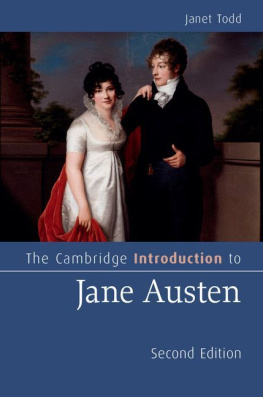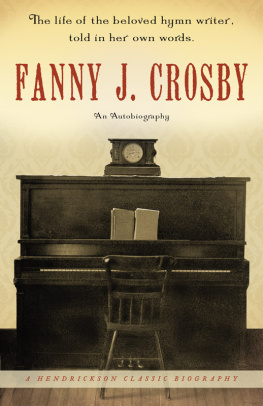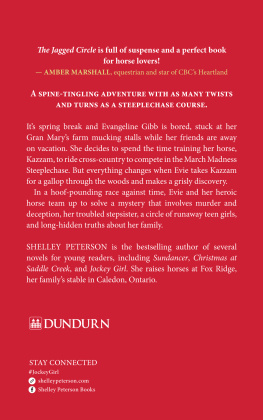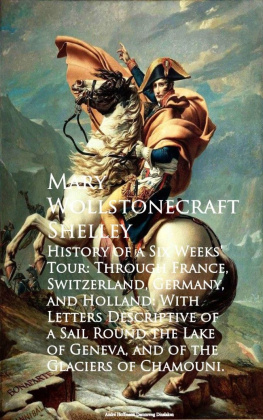Janet Todd - Death and the Maidens: Fanny Wollstonecraft and the Shelley circle
Here you can read online Janet Todd - Death and the Maidens: Fanny Wollstonecraft and the Shelley circle full text of the book (entire story) in english for free. Download pdf and epub, get meaning, cover and reviews about this ebook. year: 2013, publisher: Bloomsbury Publishing, genre: Non-fiction. Description of the work, (preface) as well as reviews are available. Best literature library LitArk.com created for fans of good reading and offers a wide selection of genres:
Romance novel
Science fiction
Adventure
Detective
Science
History
Home and family
Prose
Art
Politics
Computer
Non-fiction
Religion
Business
Children
Humor
Choose a favorite category and find really read worthwhile books. Enjoy immersion in the world of imagination, feel the emotions of the characters or learn something new for yourself, make an fascinating discovery.

- Book:Death and the Maidens: Fanny Wollstonecraft and the Shelley circle
- Author:
- Publisher:Bloomsbury Publishing
- Genre:
- Year:2013
- Rating:3 / 5
- Favourites:Add to favourites
- Your mark:
- 60
- 1
- 2
- 3
- 4
- 5
Death and the Maidens: Fanny Wollstonecraft and the Shelley circle: summary, description and annotation
We offer to read an annotation, description, summary or preface (depends on what the author of the book "Death and the Maidens: Fanny Wollstonecraft and the Shelley circle" wrote himself). If you haven't found the necessary information about the book — write in the comments, we will try to find it.
Janet Todd: author's other books
Who wrote Death and the Maidens: Fanny Wollstonecraft and the Shelley circle? Find out the surname, the name of the author of the book and a list of all author's works by series.
Death and the Maidens: Fanny Wollstonecraft and the Shelley circle — read online for free the complete book (whole text) full work
Below is the text of the book, divided by pages. System saving the place of the last page read, allows you to conveniently read the book "Death and the Maidens: Fanny Wollstonecraft and the Shelley circle" online for free, without having to search again every time where you left off. Put a bookmark, and you can go to the page where you finished reading at any time.
Font size:
Interval:
Bookmark:
DEATH
On 12 October 1816 the Cambrian newspaper in Wales reported the suicide of an unknown young woman in the upstairs room of a coaching inn called the Mackworth Arms in Wind Street, Swansea. She had arrived three days earlier from Bristol on the evening coach; the following morning she had been found dead by the maid. Next to the body was a note; the signature had been torn off, so nobody knew the womans identity. It was, however, clear that she was not the most common female suicide, a poor girl in the family way, but a most respectable lady.
The newspaper printed the note as part of a good story suicide accounts were popular. It read:
I have long determined that the best thing I could do was to put an end to the existence of a being whose birth was unfortunate, and whose life has only been a series of pain to those persons who have hurt their health in endeavouring to promote her welfare. Perhaps to hear of my death will give you pain, but you will soon have the blessing of forgetting that such a creature ever existed as
The words stopped abruptly at the tear.
Nobody came forward to claim the body and it was buried, probably at the parishs expense in a paupers grave.
So ended the existence of Fanny Wollstonecraft, half-sister of Mary Shelley, stepchild of William Godwin and eldest daughter of the celebrated feminist Mary Wollstonecraft. Who tore off the signature, so preventing identification of the body, and why?
One suggestion of Shelley and Godwin biographers is that the maid did it, instructed by the innkeeper to avoid the taint of suicide on the premises. But there seems no obvious point to this. The note and laudanum bottle made clear what had happened.
Possibly Fanny herself tore it off, suddenly feeling her own lack of identity like Marys Creature in Frankenstein she had no secure name. Illegitimate child of Mary Wollstonecraft, she was, strictly speaking, Fanny Wollstonecraft. Yet she had been registered at her birthplace in France as Franoise Imlay, using her fathers name. For most of her short life she had been called Fanny Godwin courtesy of her stepfather. When he married again the second Mrs Godwin rather resented the fact, and Fanny knew it.
Or perhaps she wished on reflection to spare the Godwins embarrassment, knowing as she did how their lives had been dogged by scandal. But the mimicry of what she must have heard at home hurt their health in endeavouring to promote my welfare sounds bitter, and she died with items that could tell the suspicious who she was: stays marked MW and a Swiss gold watch, as well as the aggrieved note. It seems unlikely that she tore off the name she had written.
There remains another option: Percy Bysshe Shelley, her sister Marys lover.
What follows is an attempt to understand why Fanny Wollstonecraft/ Imlay/ Godwin should have killed herself and written her note and why Shelley, acting on behalf of Godwin and Mary, probably defaced it.
GENIUS
Fannys death was not inevitable but it was resolutely planned. It required a long journey to find a concealed and private place a journey which gave ample opportunity for second thoughts. The day before she set out to kill herself, I believe she spoke to Shelley in Bath. He would then be the last of her friends and relatives to see her alive. His response in their unrecorded conversation almost certainly finalised her decision to die. It gave new and fatal weight to the many private slights and rejections which over the past two years since 1814 had fed her insecurity and shadowed her intense hopes.
Hers was not an idiosyncratic pain: it came from an involvement more marginal than she would have wished in a major and decisive shift in the nature of European culture. This was the emergence of a cult of genius the veneration of genius as something that exempted its possessor from the moral and social principles that governed everyday humanity. Genius was a new form of aristocracy. Beethoven reproved Goethe for his social deference to a nobleman: Goethe was, he declared, the far greater of the two.
Paradoxically, the first two meteoric geniuses to emerge in Britain Byron and Shelley were both upper class, their glamour as Romantic artists inseparable from the old glamour of the aristocrat. Shelley was an egalitarian, and his social and emotional entanglements with bourgeois characters would have been impossible had he not taken this character. Yet his egalitarianism was also one of the privileges of his high social standing. The combination inspired him to moral experiments unthinkable to bourgeois radicals like William Godwin from whom he imbibed many of his principles.
The four geniuses who dominated Fannys short life of twenty-two years are, from the earlier generation, her dead mother Mary Wollstonecraft and her stepfather William Godwin, both Enlightenment eighteenth-century thinkers, and from the second generation the Romantic nineteenth-century figures of her half-sister Mary with her lover, then husband, Percy Bysshe Shelley.
Fanny was the daughter of Mary Wollstonecraft, famous for her daring feminist manifesto of 1792, A Vindication of the Rights of Woman. This pleaded for an austere, rational womanhood to replace the emotional femininity then in fashion: with proper education women could prove they were intellectually equal to men. It was not an entirely novel idea but it was expressed dramatically in the revolutionary rhetoric of the time. Women, Mary Wollstonecraft declared, should aim at controlling not men but themselves; they should become independent beings, not artful mistresses.
For a while the work received excited and enthusiastic response. Christian liberal women such as Anna Seward called it a wonderful book which applied the spear of Ithuriel to patriarchal systems; the respectable playwright Hannah Cowley, though thinking any politics unfeminine, encountered in it a body of mind as I hardly ever met with. Subscribers to circulating libraries complained that the book was so much in demand that there is no keeping it long enough to read it leisurely. But the tide soon turned, most violently when people learnt about the miserable private life of the books author. Mary Wollstonecraft became a philosophical wanton and an unsexed female whom no decorum had checked. It was, it seemed, difficult to exist entirely by reason. Sex and jealousy had a way of scrambling lives.
Fannys father was more obscure. In Paris, a year after the publication of The Rights of Woman, Mary Wollstonecraft had fallen passionately in love with a tall handsome American entrepreneur from New Jersey called Gilbert Imlay. He promised an entrancing family life in the wilds of unspoilt America once he had made his fortune. In fact, after minimal engagement with the American War of Independence which allowed him to term himself Captain Imlay and after being involved in the murky land speculations of the notorious James Wilkinson in Kentucky, Imlay had fled the United States leaving a trail of debts and unanswered court writs. Despite a past which included slave-dealing in the 1780s, he surfaced in Europe as a republican primitive from Kentucky with impeccable libertarian views: anti-slavery, anti-marriage, anti-religion. Sometimes he traded in French royalist silver; sometimes he dealt in frontier property he did not entirely own. Having written a book describing how idyllic (and affluent) life might be on the far side of the Alleghenies, he seduced disillusioned Europeans (and perhaps himself at times) with dreams of places elsewhere much as he seduced Mary Wollstonecraft. For all his distinction from the geniuses who dominated his daughters life, Imlay shares with them their talent for peddling non-existent destinations and fictitious utopias.
Font size:
Interval:
Bookmark:
Similar books «Death and the Maidens: Fanny Wollstonecraft and the Shelley circle»
Look at similar books to Death and the Maidens: Fanny Wollstonecraft and the Shelley circle. We have selected literature similar in name and meaning in the hope of providing readers with more options to find new, interesting, not yet read works.
Discussion, reviews of the book Death and the Maidens: Fanny Wollstonecraft and the Shelley circle and just readers' own opinions. Leave your comments, write what you think about the work, its meaning or the main characters. Specify what exactly you liked and what you didn't like, and why you think so.







